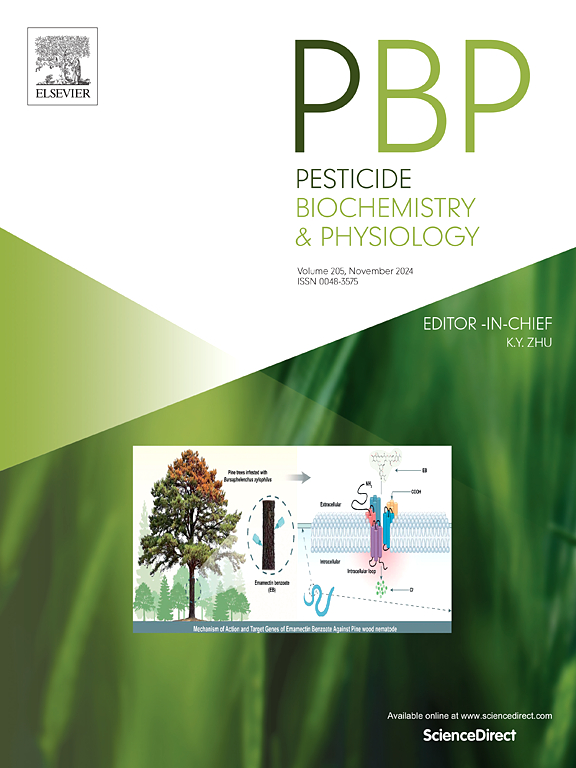Gut symbionts affect Plutella xylostella (L.) susceptibility to chlorantraniliprole
IF 4.2
1区 农林科学
Q2 BIOCHEMISTRY & MOLECULAR BIOLOGY
引用次数: 0
Abstract
Plutella xylostella, a globally economically important pest of cruciferous crops, has varying degrees of resistance to almost all insecticides. Insect gut microbiotas have a variety of physiological functions, and recent studies have shown that they have some potential connection with insecticide resistance. Here, we use metagenomics to analyze the differences in gut microbiota among 5 different populations of P. xylostella resistant to chlorantraniliprole. Differential gene expression was enriched in various metabolic pathways including carbohydrate metabolism, amino acid metabolism, energy metabolism, metabolism of cofactors and vitamins, nucleotide metabolism and so on. Proteobacteria was the dominate phyla, and the relative abundance of common dominant genera in the treated group (CL, Bt, and BtCL) was higher than that in susceptible controls. We successfully isolated 15 species of bacteria, in which the Enterobacter hormaechei was associated with enhanced insecticide resistance. The population we isolated can metabolize chlorantraniliprole in vitro, with a metabolic rate of 34.8 % within 4 days. Our work advances understanding of the evolution of insecticide resistance and lays a foundation for the further exploration of symbiotic microbial associations of lepidopteran insects and their ecological consequences.

求助全文
约1分钟内获得全文
求助全文
来源期刊
CiteScore
7.00
自引率
8.50%
发文量
238
审稿时长
4.2 months
期刊介绍:
Pesticide Biochemistry and Physiology publishes original scientific articles pertaining to the mode of action of plant protection agents such as insecticides, fungicides, herbicides, and similar compounds, including nonlethal pest control agents, biosynthesis of pheromones, hormones, and plant resistance agents. Manuscripts may include a biochemical, physiological, or molecular study for an understanding of comparative toxicology or selective toxicity of both target and nontarget organisms. Particular interest will be given to studies on the molecular biology of pest control, toxicology, and pesticide resistance.
Research Areas Emphasized Include the Biochemistry and Physiology of:
• Comparative toxicity
• Mode of action
• Pathophysiology
• Plant growth regulators
• Resistance
• Other effects of pesticides on both parasites and hosts.

 求助内容:
求助内容: 应助结果提醒方式:
应助结果提醒方式:


